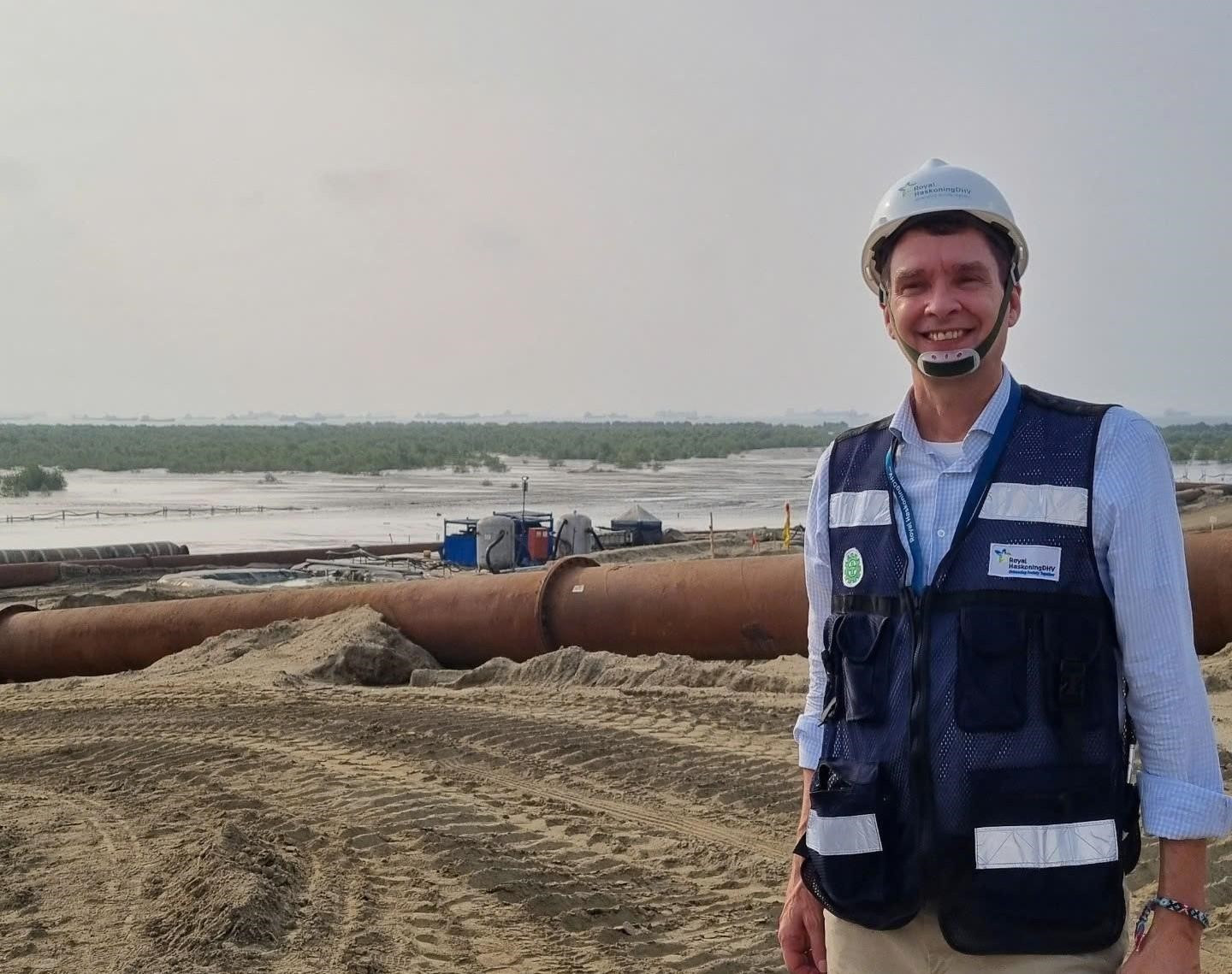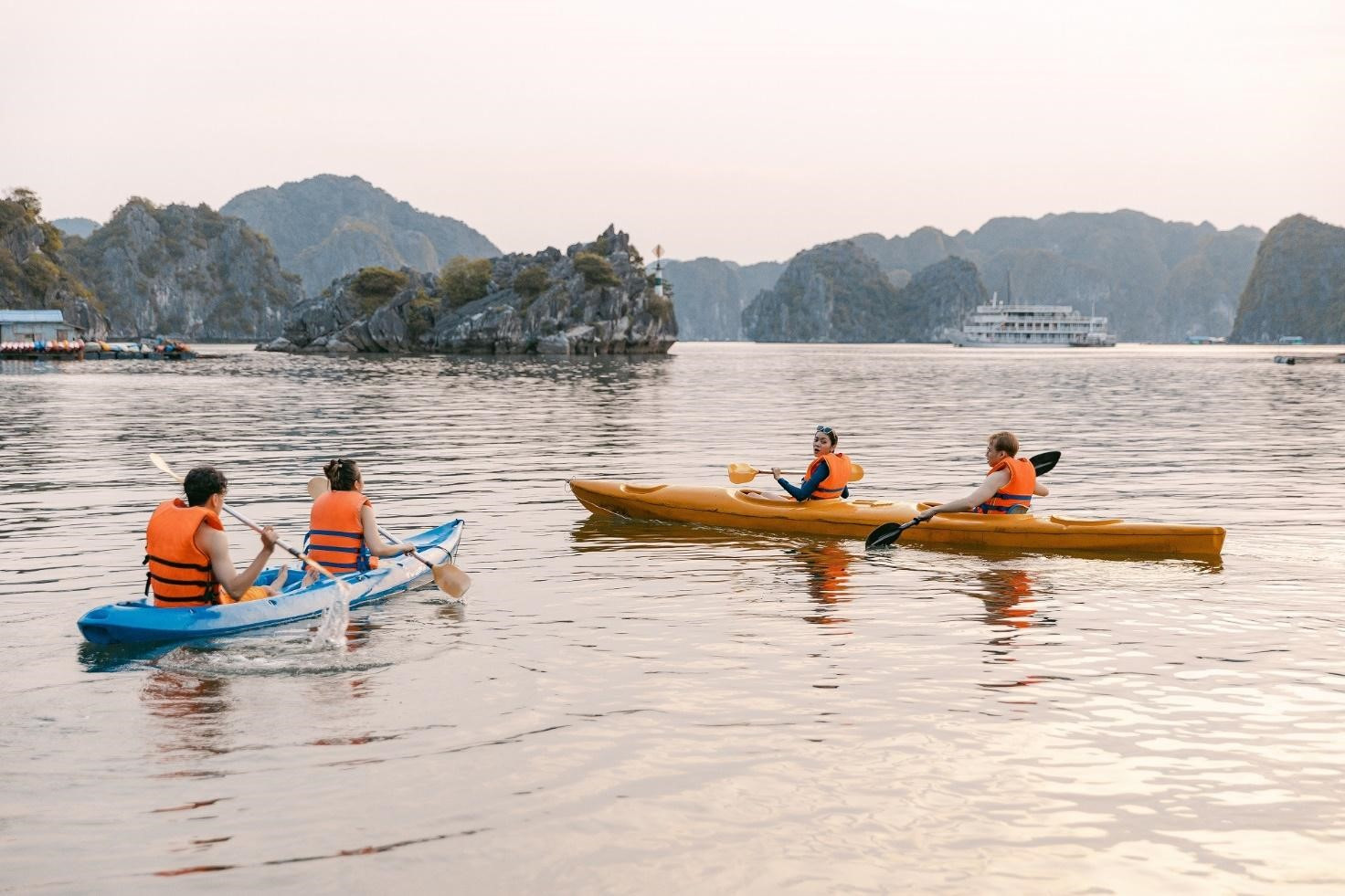According to Mr. Michael van de Watering, a leading expert at the international consulting engineering firm Royal HaskoningDHV, Cat Ba Island requires cooperation among the government, businesses, and the community to promote potential and sustainable development, focusing on eight crucial considerations.

Cat Ba, often referred to as the “Pearl Island” in the Gulf of Tonkin, is one of the largest biosphere reserves in the world. These priceless resources present opportunities to develop into a model ecological island in the region. However, to reach this goal, Cat Ba must balance its economic aspirations with environmental sustainability. As a leading consulting firm globally, how do you assess the “difficulty” of this problem in Cat Ba?
Michael van de Watering: Balancing economic development and environmental protection is a challenge faced by the entire world. From tourist destinations like the Maldives to developed countries such as the Netherlands and powerful nations like China, all are seeking a viable path forward. This issue is not just a challenge for Cat Ba.
The Cat Ba archipelago encompasses over 30,000 hectares, with 50% designated as forest area and nearly 30% as a nature reserve. Residential and new urban areas, combined with trade and services, account for about 14% of the land, while commercial and service land is only about 3.5% - a relatively modest figure. With this limited land resource, achieving the status of "Asia's little Maldives," developing sustainable green tourism, and becoming a classy island paradise will require overcoming many obstacles.
The key to Cat Ba's success lies in a detailed, methodical plan backed by a deep, broad, and groundbreaking vision.
Can you clarify the solutions for Cat Ba?
Michael van de Watering: There are eight main points to consider:
1. Going Hand in Hand with Nature: This approach emphasizes prioritizing environmental friendliness from the outset, focusing on innovative design, planning, and the use of sustainable materials to minimize negative impacts.
2. Using Alternative Natural Materials: Incorporating alternative materials, such as industrial byproducts or geosynthetic materials, reduces reliance on finite resources like sand and mitigates the adverse effects of sand mining.
3. Applying Green Solutions: Green solutions refer to construction and land improvement methods that are environmentally friendly. For instance, employing the Polder method involves regenerating materials from demolished structures and testing new sand made from waste to combat sea encroachment. This approach should also include restoring coastal areas in terms of both landscape and biodiversity.
4. Conducting Thorough Assessments of Dynamics and Hydrodynamics: Understanding flow and sediment movement helps in designing projects that do not disrupt natural processes and optimize sediment dynamics.
5. Establishing an Environmental Impact Assessment Program: Monitoring coastline changes, the impacts of land reclamation, and ecosystem fluctuations is vital to gauge the ecological health of the area.
6. Implementing Effective Water Resource Management: This is a critical task for sustainable development, particularly for archipelagos like Cat Ba. A lack of water treatment infrastructure leads to insufficient domestic water supply, and untreated wastewater poses pollution risks.
7. Planning Marine Space: Cat Ba must harmonize its marine space planning with the natural ecosystem and conservation areas, clearly identifying regions that require protection and those at risk of adverse effects. This strategy will aid in effective resource management and mitigate the impacts of climate change.
8. Applying Innovative Technology and Adaptive Planning: Advancements in construction techniques and flood prevention systems are essential. Infrastructure must be designed to withstand and adapt to climate change, employing a staged adaptive approach that accounts for future uncertainties.
By addressing these eight considerations, I believe that Cat Ba can achieve sustainable development while maintaining ecological balance within its tourist islands.
Cat Ba’s long-term goal is to evolve into an ecological, zero-emission island. How feasible is this aspiration, and what roles should the government, businesses, and community play in realizing this ideal destination?
Michael van de Watering: With 143 years of global experience in sustainable development solutions, we believe that the pathway to becoming an ecological, zero-emission island is entirely feasible, representing a challenge that can be met. The archipelago possesses the necessary conditions in terms of natural foundations and tourism potential. However, achieving this goal will require substantial effort, collaboration among the government, businesses, and the community, and an embrace of the Nature-Based Approach.

Policies and regulations are fundamental prerequisites for developing Cat Ba. Local authorities can explore four groups of solutions:
- Group 1: Regulations and Awareness: Implementing strict environmental protection regulations is essential, along with educational programs to raise awareness among locals and tourists while gathering innovative initiatives.
- Group 2: Infrastructure Investment: Increasing investment in renewable energy sources such as wind, solar, and tidal energy is crucial. Developing green transport infrastructure, including cable cars and electric vehicles, alongside waste and wastewater treatment facilities, will support nature-based solutions.
- Group 3: Ecological Tourism Development: Local authorities should establish mechanisms to attract businesses focused on eco-tourism, shaping the image of Cat Ba as an ecological island. This tourism development can create stable job opportunities and contribute to social security for local residents while enhancing green spaces.
- Group 4: Investment and Technology Application: The adoption of advanced technologies, such as smart waste treatment and green transportation, along with hybrid or advanced aquaculture and adaptive planning principles, is essential for sustainable development.
Businesses are encouraged to lead by implementing green initiatives, focusing on eco-tourism, and employing modern technologies to minimize carbon emissions from tourism activities. Additionally, communities must actively engage in environmental protection efforts, raising awareness and minimizing waste and pollution.
It is noteworthy that Sun Group is developing the Cat Ba Central Bay Tourism and Commercial Service Area - a pioneering project aimed at achieving zero carbon emissions while providing numerous facilities for the community. Can you share experiences on successfully developing and replicating the “Net Zero” model in Vietnam?
Michael van de Watering: I commend Sun Group's boldness in pursuing future-oriented projects like the Cat Ba Central Bay Tourism and Commercial Services Area. This model is prioritized for development by numerous countries, and we anticipate more enterprises in Vietnam, like Sun Group, will emerge with sustainable projects aimed at achieving zero carbon emissions. The commitment to a nature-based approach and innovative ideas, such as developing green transportation via the cable car system in Cat Ba, is commendable.

Reflecting on the “Net Zero” goal, we have consulted on several projects, including land reclamation efforts in Jakarta Bay and Pluit City in Jakarta (Indonesia), which aim to create sustainable urban areas and housing across two artificial land reclamation islands.
To replicate the ecological, zero-carbon emission model, policymakers and large enterprises like Sun Group must adopt progressive strategies. Coastal zone and marine spatial planning must align with ecosystem needs, effectively manage resources, and anticipate climate change impacts while balancing infrastructure investment with environmental sustainability and climate resilience.
The key factor in achieving a “green transition” is innovative technology. This encompasses everything from materials and construction methods to power grid systems, energy solutions, transportation, solid waste management, and wastewater treatment - each component must be smart, green, climate-resilient, and sustainable.
Ultimately, success hinges on consensus and collaboration among all stakeholders, including the government, private sector businesses, and the community, all moving toward the shared goal of green and sustainable development. No project can be realized without these three pillars.
By addressing these propositions, Vietnam can fully develop regional-scale ecological islands, achieving sustainable development, Net Zero, and climate resilience by 2050, as committed at COP26.
PV